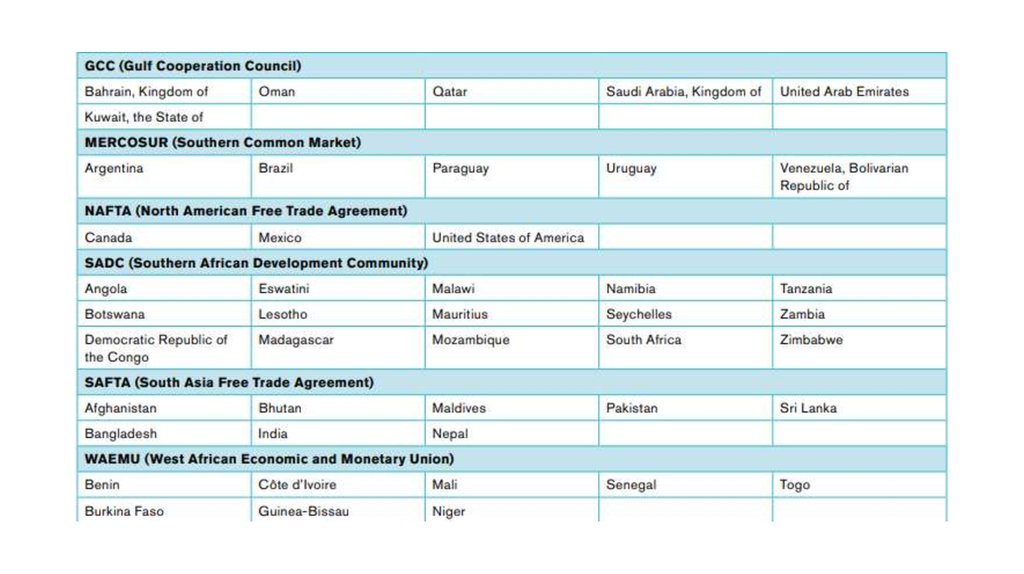
While limited in scope, RCEP covers more people than any previous trade agreement, with China alone contributing 1.4 billion to the roughly 2.2 billion people united in the deal.Īs the following chart shows, the new trade bloc also carries significant economic weight, accounting for almost a third of global GDP in 2019. The pact, which is the result of intense negotiations that started in 2012, is seen as an extension of China’s influence in the region. Brunei, Cambodia, Indonesia, Laos, Malaysia, Myanmar, the Philippines, Singapore, Thailand, and Vietnam) as well as South Korea, China, Japan, Australia and New Zealand. The Regional Comprehensive Economic Partnership (RCEP) is made up of the ten ASEAN states (i.e. World Bank, Washington, DC.Following years of negotiations, 15 countries formed the world’s largest trading bloc on Sunday.
#REGIONAL TRADE BLOCS SERIES#
“ Preferential Trade Agreements and Global Value Chains: Theory, Evidence, and Open Questions.” Policy Research Working Paper Series 8190. “ Deep Trade Agreements and Vertical FDI: The Devil Is in the Details.” Canadian Journal of Economics. “ Do Deep Trade Agreements Boost Vertical FDI?” World Bank Economic Review 30 (Supplement): 119–125. “ Deep Integration and UK–EU Trade Relations.” In The Economics of UK-EU Relations, edited by Nauro F. “ Trade Creation and Trade Diversion in Deep Agreements.” Policy Research Working Paper Series 8206, World Bank, Washington, DC. Osorio-Rodarte, March 2018, Economic and distributional impacts of comprehensive and progressive agreement for trans-pacific partnership : the case of Vietnam.

WBG research on regional trade agreements:
#REGIONAL TRADE BLOCS FREE#
In many other cases, often involving developing countries, new trade agreements have been concluded or are being negotiated, including the Comprehensive and Progressive Agreement for a Trans-Pacific Partnership (CPTPP), the European Union–Mercosur trade agreement, the Regional Comprehensive Economic Partnership between the Association of Southeast Asian Nations (ASEAN) countries and six of their major trading partners, and the Continental Free Trade Area (CFTA) in Africa. Some of these discussions are about reversing or renegotiating current arrangements, as in the case of Brexit and the North American Free Trade Agreement.


Aspects of deep agreements are public goods.On average, deeper agreements increase goods trade by more than 35 percent, services trade by more than 15 percent, and GVC integration by more than 10 percent. Deep agreements boost trade, foreign investment and global value chain (GVC) participation more than shallow agreements.If efficiently designed, they can improve policy cooperation across countries, thereby increasing international trade and investment, economic growth and social welfare. They reduce trade costs and define many rules in which economies operate. Deep trade agreements are important institutional infrastructure for regional integration.


 0 kommentar(er)
0 kommentar(er)
